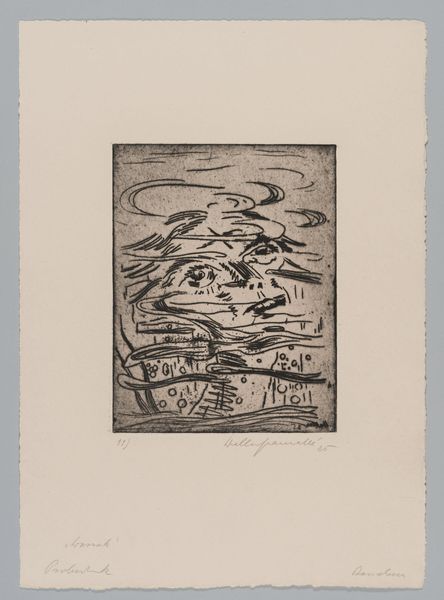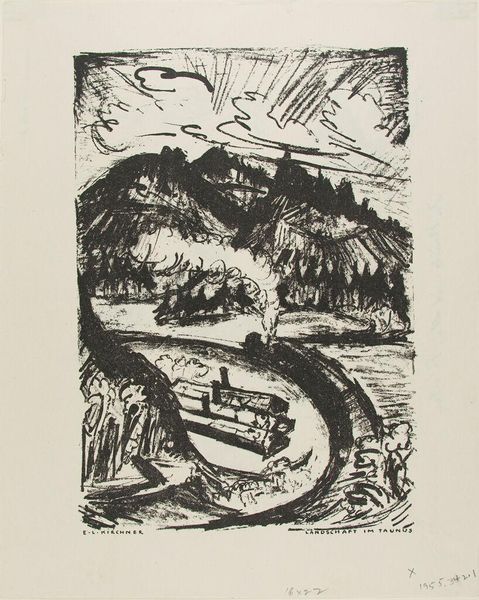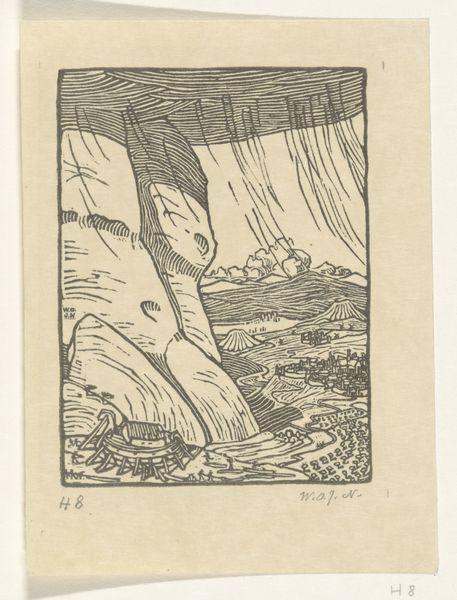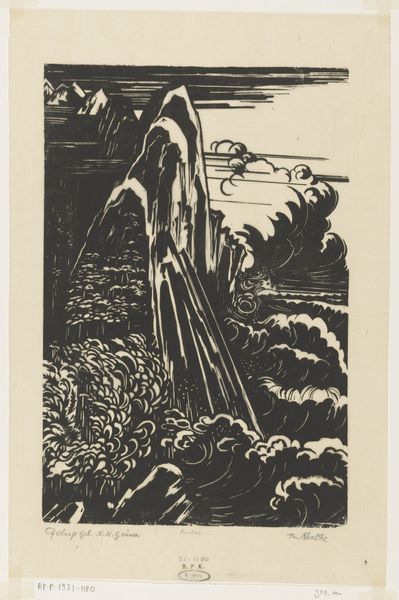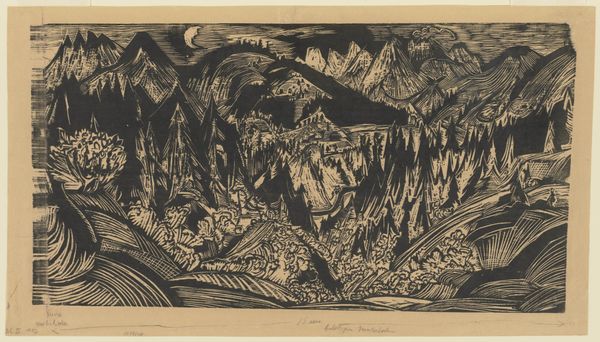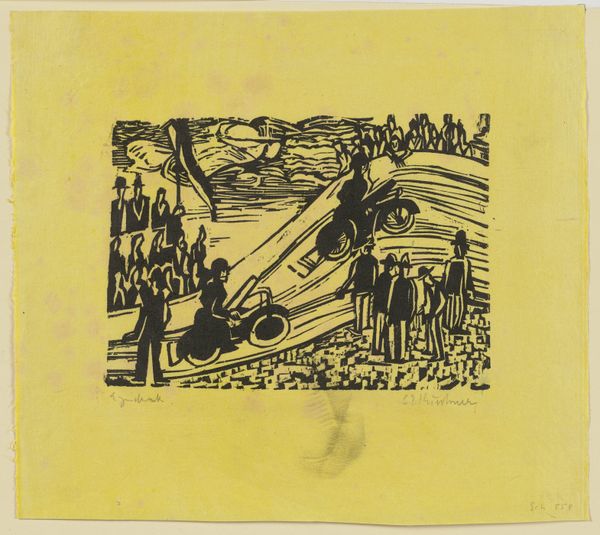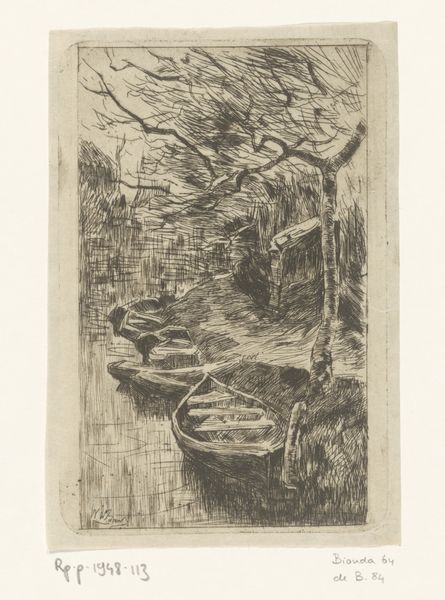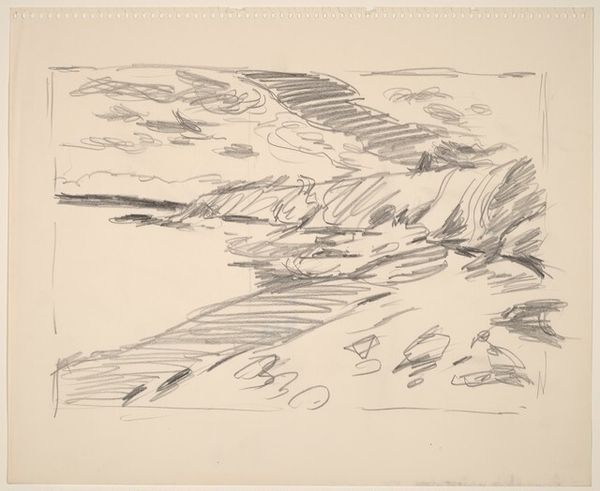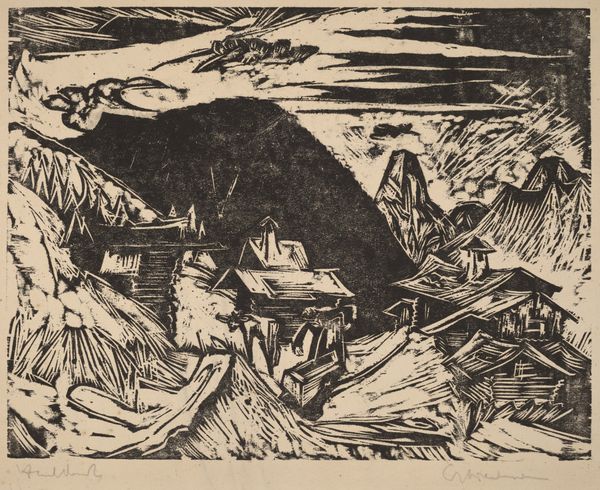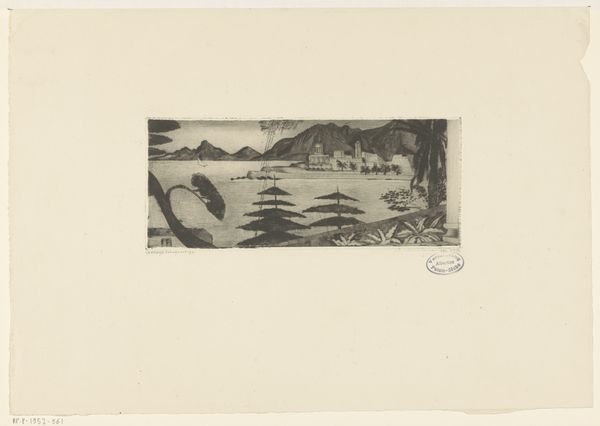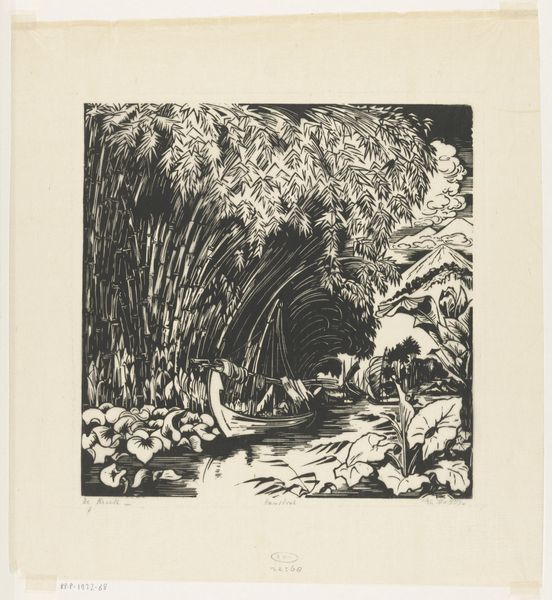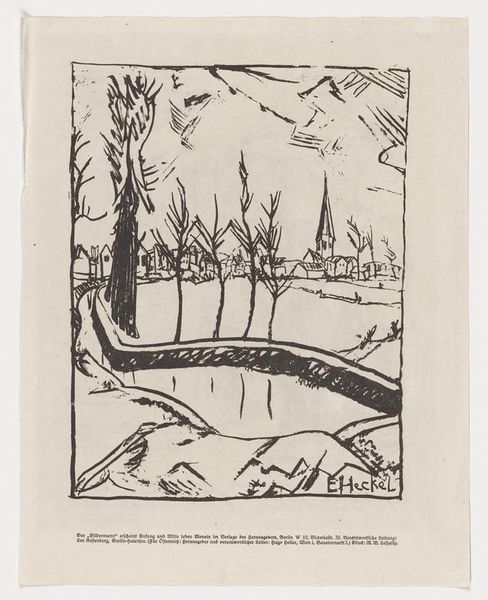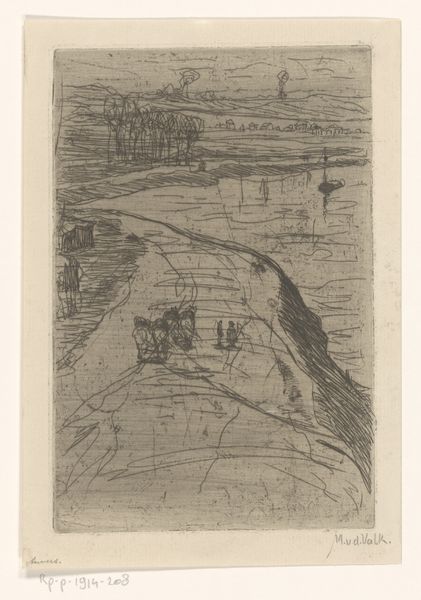
Landscape in the Taunus (Landschaft im Taunus) (recto) and Signs of the Times V- Into Dust with All Enemies (Symbole der Zeit V- In Staub mit allen Feinden) (verso) 1916
0:00
0:00
lithograph, print, ink
#
ink drawing
#
lithograph
# print
#
pen sketch
#
landscape
#
german-expressionism
#
ink
#
expressionism
#
line
Dimensions: 13 1/2 × 11 in. (34.29 × 27.94 cm) (sheet)
Copyright: Public Domain
Ernst Ludwig Kirchner made this print, Landscape in the Taunus, with etching. Look at the quick, scratchy lines—they remind me of doodles in a notebook, or the way a landscape blurs when you’re speeding by in a car. There’s a real sense of immediacy. The image has a kind of harshness to it, a stark contrast of black and white that feels almost violent. The mountains are jagged and looming, the sky filled with frenzied strokes. But then, there’s that little train chugging along in the middle. It’s like a symbol of industry, or progress, cutting through the natural world. I’m thinking about those bold, graphic lines that create a sense of depth, and how they pull you into the landscape. Kirchner’s marks are so alive, so full of energy. It’s as if he’s trying to capture not just what he sees, but how he feels about it. It feels very much of its time, and reminds me a little of the landscapes of Emil Nolde. This print isn’t just a picture; it’s a record of a moment, a feeling, a way of seeing.
Comments
minneapolisinstituteofart almost 2 years ago
⋮
In 1916, publisher Paul Cassirer started a new periodical, "Der Bildermann" [The Picture Man], "to bring a broad public directly in touch with art." It featured original lithographs that sought to offer beauty as a form of relief from the grinding brutality of World War I. Leo Kestenberg, a pianist and pacifist, ran the journal while Cassirer served in the army. Max Slevogt designed the vignette on the masthead, which shows a man peddling broadsheets to eager soldiers and civilians of all ages and stations. "Der Bildermann" embraced the art of impressionists (such as Max Slevogt), expressionists (Erich Heckel and Ernst Ludwig Kirchner), and naturalists (August Gaul). Dwindling subscriptions, increasing difficulties with censors and the bureaucracy, led to "Der Bildermann’s" demise after only eighteen issues.
Join the conversation
Join millions of artists and users on Artera today and experience the ultimate creative platform.
